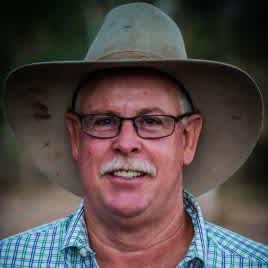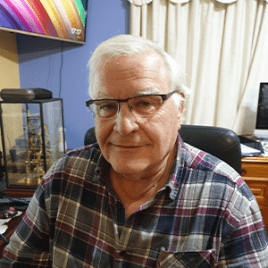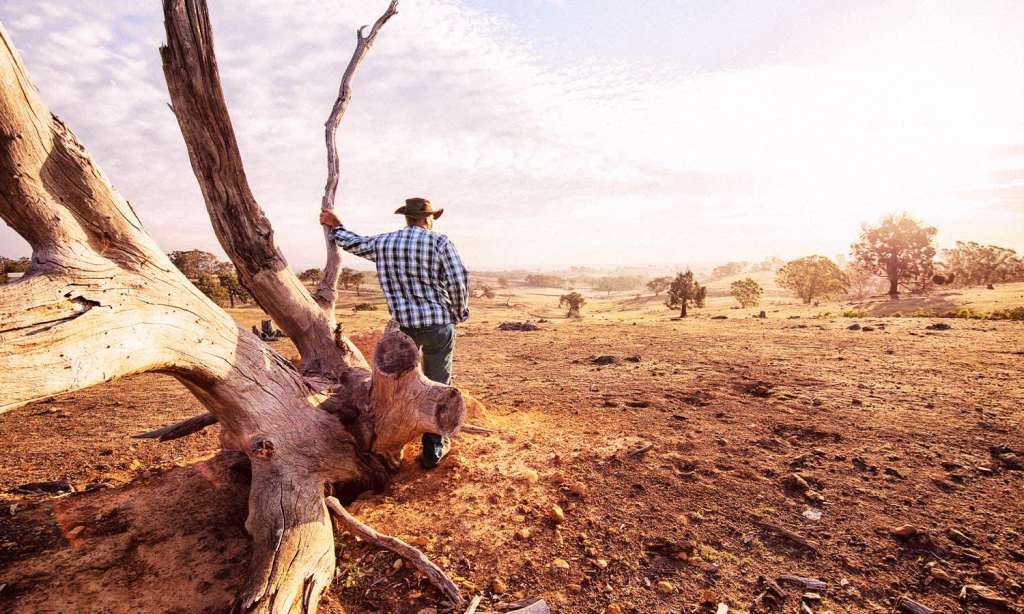We know that election season has well and truly begun, despite a date for the next federal ballot-casting not having been announced yet, as the Liberal Party have gone hard on climate action over the past few weeks.
Prime Minister Scott Morrison has even had the gall to rollout a new raft of investments into electric vehicles, technology he spent the previous election trashing, by claiming he never said a bad word about them. This is despite the fact that footage of him claiming they’ll never “tow your boat” and will “end the weekend” exists. Here’s a video of an electric vehicle towing a full-size airliner back in 2019 just to demonstrate how ridiculous that suggestion is.
Much of this greenwashing has failed to stick, as Morrison has allowed Australia’s name to be dragged through the mud at COP26 where we became climate pariahs, siding with the likes of Saudi Arabia and Russia in removing language from the final deal that would limit fossil fuel expansion and refusing to budge on our 2030 targets.
In the largely fabricated struggle between the rock of impending climate doom and the hard place of not giving up a national addiction to fossil fuel revenue, Morrison and co often rely on the argument that ‘out of touch inner-city lefties’ simply don’t get the hardships that would be dealt to people in regional areas if we took serious steps to reduce our emissions.
This is despite the fact that 86% of Australians live in urban areas and that jobs in the fossil fuel sector account for just 1% of Australian employment. Anyway here’s Deputy PM Barnaby Joyce falsely claiming that coal is something Australia just can’t live without.
People living in rural and regional areas of the country are often rolled out as political tools by the Coalition as excuses for why Australia simply has to wrestle the steering wheel away from the rest of the world, slamming us into catastrophic warming and climate doom.
We decided to go and ask some people who actually live in regional areas what they think about this political scapegoating and whether they appreciate being used by the government in this way.
Now, it must be said that the people we spoke with are ardent climate action supporters, however their words serve to demonstrate that people living in rural communities are not a homogenous group and that many of them understand both the risks and demands of climate change since they’re the ones who are actually sitting on the frontline.
Here’s what they had to say.
“A Marketing Ploy With No Substance”
 Angus Emmott is a third-generation Queensland grazier, running Noonbah Station near Longreach in the dead centre of Queensland. He is arguably exactly the kind of person referred to when politicians conjure up “regional workers” in debates on climate action. His family have been running the station for over a century but, as the climate has changed, so too have their operations.
Angus Emmott is a third-generation Queensland grazier, running Noonbah Station near Longreach in the dead centre of Queensland. He is arguably exactly the kind of person referred to when politicians conjure up “regional workers” in debates on climate action. His family have been running the station for over a century but, as the climate has changed, so too have their operations.
“Climate change is happening,” Emmott said.
“Droughts are getting longer, and hotter, and drier and, when we get rain, the rain events are getting more violent. There’s a lot more volatility in our weather systems now so you’re getting bigger droughts or bigger winds or bigger floods. Bigger everything”.
Emmott doesn’t claim to speak for everyone in his region and said that there’s a lot of people from a lot of different political background who see it differently. For himself though, and those who “follow the science,” the changes are down to inaction on the climate.
While it’s possible to write off drought as simply a bad year, Emmott says that, from where he’s standing, the longer-term trends with increasing minimum and maximum temperatures can only be explained by climate change. The environment in central Queensland is already changing almost beyond recognition while these arguments play out.
“My brother is on a property just on the edge of town up near Longreach. He’s in his ninth year of drought up there and all the grass has gone, even the tussocks of grass have gone. There’s a bit of roly-poly there blowing up against the fences but it just looks like a Martian landscape,” he said.
“Once it gets above 45, 46 [degrees Celsius] and getting up around 48, 49, it starts to kill the birds. The kangaroos are dying and if you start moving stock, it’ll kill them and probably you too.”
If serious climate policy is not implemented, it’s evident that the very industries that politicians are claiming to protect by not taking action will disappear as the climate warms.
“If you’re looking at agriculture and making a living out of long term, you’ve actually got to think really carefully about how you do that. Mitigation and looking at ways to get through drought is important, but in the longer term, we’re not sure whether it’s going to be possible.
“That is why it’s so crucial for our politicians to pull their finger out and actually act this decade instead of waffling”.
While Emmott says that the recent announcement that Australia will reach net zero by 2050 is a step in the right direction, without clear pathways for how we’re going to get there, the move is simply a political gesture.
“It’s just a marketing ploy with no substance behind it. We actually look at the plan, it’s trying to carve agriculture out of methane [emissions], it’s trying to not do anything in this next decade. If you look at it very critically, I would think that you would conclude it’s just a ploy to get through the next election rather than actually taking serious action,” he said.
While the picture he paints is a bleak and frustrating one, it’s not without its silver linings or the possibility of redemption. Emmott notes that a lot of industries and investors, as well as states and smaller government bodies, are moving towards net zero at a much faster rate, regardless of what the federal government says. It is however a much trickier process in the absence of leadership.
“Agriculture is actually probably the only industry, if we manage it well enough in the way of policy, that can actually be carbon negative. Instead of putting carbon into the atmosphere, if we manage it well enough, We can actually soak up carbon, not enough to offset all the other industries, but there are opportunities out there and we’re going to be denied those opportunities without good policy,” Emmott said.
“There are parts of Australia that will become very, very challenging, but there are other parts of Australia that are ideally set up to take advantage of the opportunities that will present themselves as we move towards a world net-zero economy.
“There’s a whole heap of different models out there for all different agricultural industries, but without good public policy at the federal level, it’s happening so much more slowly and it makes it so much harder to kick into action meaning agriculture will miss out on many opportunities”.
“The Stone Age Didn’t End Because We Ran Out of Stones”
So, what exactly is stopping us from taking advantage of the opportunities available? The cynical reading is that the coal and gas lobby has a suicidal vice grip on our elected representatives, as demonstrated in Marian Wilkinson’s revealing expose The Carbon Club.
Another, somewhat more fatalistic take is that the market is simply doing what the market does.
 Chris Barfoot is an engineer and scientist who has spent three decades in the power stations and mines of the Latrobe Valley, Victoria. He’s been working in the fossil fuel sector for his entire career and clearly understands the need to transition away from non-renewable energy as well as the vast potential in transitioning to green jobs.
Chris Barfoot is an engineer and scientist who has spent three decades in the power stations and mines of the Latrobe Valley, Victoria. He’s been working in the fossil fuel sector for his entire career and clearly understands the need to transition away from non-renewable energy as well as the vast potential in transitioning to green jobs.
He explains that it’s market forces that are largely keeping coal-fired power stations alive in Australia but that that era is coming to a close.
“The biggest difference we found was after the privatization of Hazelwood [Power Station],” Barfoot said.
“Previously, under a state-owned enterprise, you always look to the future. A power station was built with a 30-year life span. At the end of 30 years, it was meant to be demolished and newer stations built”.
“When we lost the control of the system, broke it up into individual buyers, nobody kept that oversight. From that point on, it became a situation where most of the buyers of the stations simply wanted to get the maximum value out of the asset they’d bought so they wanted to make it run as long as possible”.
In the mid-80s, state energy investors were already looking at wind turbines and solar power as they could see that coal was on the way out, Barfoot explained.
“Once these things were sold, there was no incentive for those owners to go down those paths. The best incentive was simply to just keep it running”.
It’s not the greenies or the students striking for climate action that shuts these places down, Barfoot said, it’s simple economics.
Australia exports 75% of its coal. More coal mines and more coal power stations are largely redundant in increasing the livelihoods and quality of living of most Australians. These things won’t bring energy prices down, nor will they ensure reliable energy production. All they do is simply prop up dying industries overseas and the profits of the coal industry here, an industry that, incidentally, is largely foreign-owned and pays less tax at a lower rate than other businesses.
On the issue of jobs, Barfoot admits that transitioning to renewables will have a huge impact on those that work in the sector but that can be easily overcome with a little planning.
“A power station and mine in this region would use about 700 to 800 people to operate. A large scale solar farm would use three. That’s just the difference.
“Renewables don’t create jobs, but what renewables can do is create cheap power. If they create cheap power, it becomes logical that you co-locate the manufacturing industries into them. That’s where your jobs come from”.
With the closure of coal mines, Barfoot explains that we need accountable plans for the future of an economy without coal industry jobs. In doing so, and in creating vast renewable power generating roles, “we could turn ourselves around and literally be a world leader” in energy.
“Why would we just do energy when you have the opportunity to make the things that make the energy here? Build those into it as well. You build the racking, you build the frames, you build the panels, you build the systems”.
Infrastructure on this scale, supplying the world with the energy it needs from clean sources as well as the equipment to make its own would have an impact on an Industrial Revolution-type scale, Barfoot said.
“Let’s be blunt, everybody knows this industry is dying. Everybody knows it’s coming to an end. Once you accept that, the need for change is there. It’s just getting the will and the interest in people to make that change that is so critical”.
Read more stories from The Latch and subscribe to our email newsletter.







